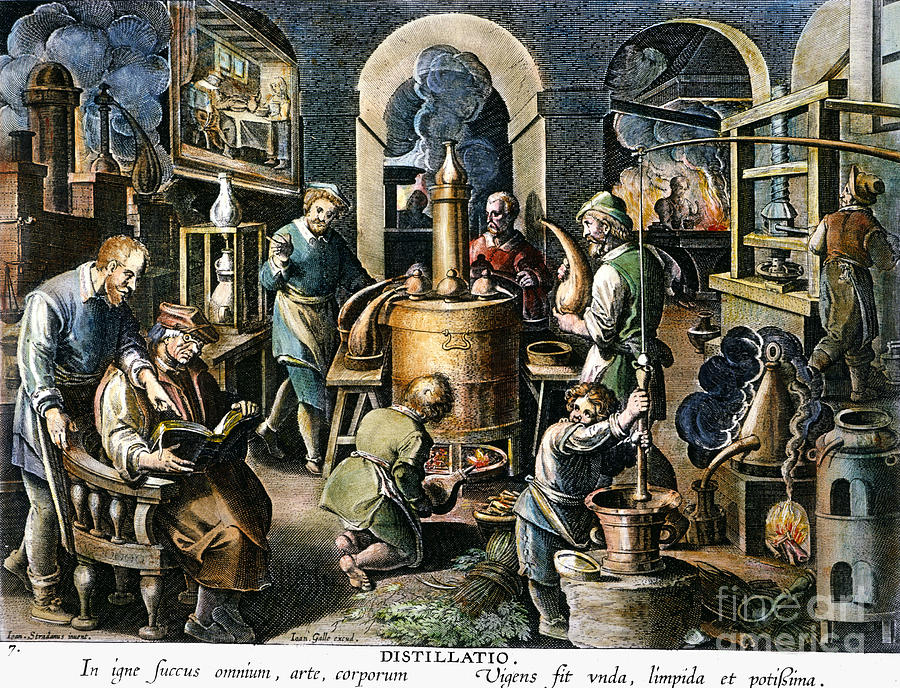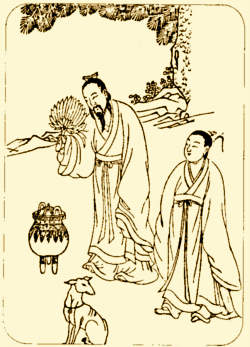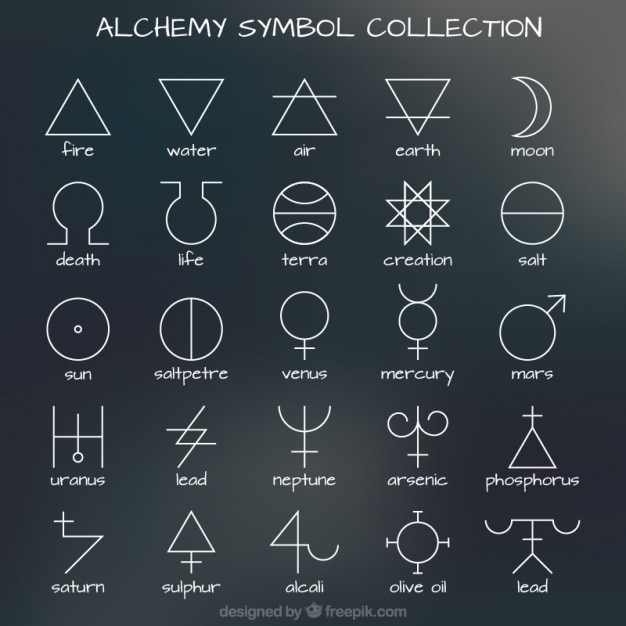Hello, and welcome to another one of my articles. As autumn slowly aproaches, I´ve decided to post one more article before the school starts. Oh, I´m so excited about school. This year I´ll start going to brand new school. In Croatia, children first go to the primary school from the age of 7 to the age of 14 and when they are 15 they head of to the middle school after which they can go to the college. I shall enter the middle school now and I´m extra currious about how will my class look like and what are the teachers like... It will probably be much harder than primary school because I choose to go to one of the hardest schools in the town. That is why I am a bit scared that I will not have enough time for reading, watching Doctor Who or Winx and writing, but I guess I shall manage somehow.
For the last couple of days I´ve dedicated some of my free time to do some research on alchemy. Since I was in Prague in the Museum of Alchemists and Magicians of Old Prague I wanted to find out something more about this interesting topic, so I went to the local library, borowed some books about it and amde some notes. For those who never heard of it, alchemy is not really a science, but something between science and faith. The alchemist appeared few centuries B. C. and were present in the world untill 17th century, somewhere even longer.
Alchemists wanted to get gold from other metals and make the elixir of life.
Alchemy
For the last couple of days I´ve dedicated some of my free time to do some research on alchemy. Since I was in Prague in the Museum of Alchemists and Magicians of Old Prague I wanted to find out something more about this interesting topic, so I went to the local library, borowed some books about it and amde some notes. For those who never heard of it, alchemy is not really a science, but something between science and faith. The alchemist appeared few centuries B. C. and were present in the world untill 17th century, somewhere even longer.
Alchemists wanted to get gold from other metals and make the elixir of life.
 |
| Hermaphrodite |
Alchemy
Alchemy can not be called a forerunner of
chemistry, that would be protochemistry which started in Alexandria in the 3rd
century B. C. When the first chemists tried to turn metals into noble metals (
mostly gold ). This is also a big part of alchemy, but except alchemists wanted
to turn others metals into gold, they tried to make an elixir of life which
protoalchemists did not do. Protoalchemists, and later alchemists, thought that
they could change the nature of a metal. Aristotel, the Greek philosopher, said
that all elements are based on the four basic elements; fire, water, wind and
aether, so the first alchemist thought that every metal is made of those four,
so if they could change representations of those elements inside a metal, they
could turn it into gold.
Alchemy came to Europe through Arabian
culture. Whenever the Christian fate started to spred through Rome and Europe,
protochemists were expelled and their books burned. The emperor Diocletian
burned their books in the 3rd century because he thought their theories were
fake and they themselves liars making fake gold. They escaped to Siria and
started to spread their knowledge there where noone persecuted them. There the
Arabian alchemy was born, and it included the making of elixir as much as
turning metals into gold.
However, this was not the first alchemy in the
world. In China, alchemy apeared in the second century B. C. We know that
because there is a document from that century in which the emperor forbiddens
alchemy. However, the emperor Wu Di ( Wu Ti ) allowed alchemists to continue
with their work only few years after it was forbidden, but only at the court.
There, the life elixir was called wai dan. To make wai dan was the main
goal of the Chinese alchemist, and they wanted to make gold because they
thought it was needed to make the elixir. Cinabarit and mercury were laso
thought to be the main contains of the elixir. The first Chinese alchemists
were mostly sorcerers and people thought they were immortal.
 |
| Making of homunculus |
There are two
learnings that alchemist in China used. Daoism is the learning about the
conection betwen human and the nature and the learning about jin and jang is
the learning of two opposing forces that complement each other ( „if you
increase the jang in the metal, you might make it noble“). They believed in
five, not four, main elements that affect everything in the world; wood, fire,
aether, metal, water; they called them xing. They also believed in qi, which is
simmilar to pneuma in Europe, the core of all substances.
Period from
4th to 8th century is called „the golden age of Chinese alchemy“. The emperors
of the dinasty Wei were inclined to the alchemists at this time. The only
problem was that the elixirs they were making were often poisonous instead of
medicinal. The most important alchemists from China were Tao Hongjing and Sun
Simo from the golden age, Wei Boyang who wrote the first alchemy book in the
second century and Ge Hong who wrote the book Baopuzi which contains two parts;
Waipian ( his life story and political thinking ) and Neipian ( alchemy and
exorcism... ) and it is thought he brought back king to life. Later, wai dan (
„external“ elixir ) was replaced by nei dan ( „interior“ elixir ) which is
achieved by exercise and productivity and the alchemy became some sort of
religion untill it dissapeared.
 |
| Hermes Trismegistos, Arabian wise man and alchemist |
Meanwhile, in
Siria, bookseller Ibn al-Nadim made a catalogue of books which was full of
alchemy books.This bookseller also wrote Fihrist, a biography of Geber, who was
thought to be the biggest Arabian alchemist, but in Europe. It is not sure if
he even existed or is he just a legend, but there are many books under his
name. Arabian alchemists took the learning of the nature of elements from
protochemists; warm, cold, dry, humid. They thought some of them were interior
and some external ( example; lead is cold and dry on the outside and warm and
humid on the inside – to get gold you must suppress the exterior in the
interior ). Some alchemists tried to make homunculus; artificial human for
which they used organic substances ( blood, sperm, egg white... ) and the
picture of what was supposed to be made ( Edward Kelley and Paracelsus tried
this later in Prague ). Al-Razi was famous doctor and alchemist who allegedly
made gold out of silver.
In the 11th
century came the Crusades, Arabians lost their land in Europe and Arabian
alchemy disappeared.
 |
| Alchemist´s laboratory, 16th century |
Through booksellers and sailors from 11th to 13th
century alchemy books came from Siria to Europe and started to be translated into
Latin. Some of the translators were Michael Scot, Constantin of Africa, Herman
Dalmatin, Robert from Ketton and others. Alchemy could be sepparated into
experimental and spiritual. In Europe, it appeared as experimental with a slice
of Arabian spirituality and a bit of Christian simbolic. There were three kinds
of alchemists in Europe; 1) scholar who is exploring, mostly nobles, rich men
or scientists, 2) self-taught enthusiast and 3) a fake, those who tried to make
fake gold and sell it.
Nicolas Flamel
was benefactor who donated a lot of money to the Church and to help the poor.
There is a story that he turned half pound of mercury into silver and later
mercury into gold, a huge amount of gold, and got rich. Johan Baptista van
Helmont ( 1579.-1644.) wrote Ortus medicinae which contains many fantasy
stories about the philosopher´s stone which was supposed to turn metals into
gold. The philosopher´s stone or lapis philosophorum was first mentioned in
Summa perfectionis magisterri which is attributed to Geber.This book was the
most wanted alchemy book for centuries. It was written somewhere durring 13th
or 14th century. The wife of Sigismund I. (1368.-1437.), German, Hungarian and
Croatian emperor, Barbara, was amateur alchemist, so the Croats called her „The Black
Queen“. The first original Latin alchemy text is attributed to Arnaldo from
Villanova. Inquisition burned some of his books and he was accused of being
heretic.
The spiritual
access to alchemy started when in 1330 Petrus Bonus wrote Pretiosa margarita
novela which contains complete view of the alchemy knowledge ferom that time,
compares the medicine and alchemy and says that „The purpose of alchemy is to
heal the metals and speed up their conversion into gold, the final state of
their development“ and „Alchemy is both natural and divine“.
 |
| Green lion devouring the sun |
Many
alchemists were making their own symbols they used in their recipes, but there
were some who constantly appeared and always meant the same thing.
King – Gold
Queen – Silver
Marriage – Reaction ( if the queen and king marry,
Hermaphrodite will be born )
Eagle – volatility
A green dragon devouring the sun – Aqua regia
A greed lion devouring the sun – Copperas
And others...
In 17th
century alchemy started to be shown in books through the pictures. Tripus
aureus shows 12 keys of Basil Valentine ( he was not actually real ) which show
how to make the philosopher´s stone. In 1618 Atalanta fugiens was written with
it´s 50 painted alchemy signs inspired by Greek mithology.
In 18th
century, A. L. Lavoisier found out the reactions of burning and breathing and
defined all elements. Alchemy lost it´s meaning and slowly disappeared.
In India, in
4th century, alchemy was present, but never really important. Alchemist wanted
to make the elixir of life and they thought, just like alchemists in China,
that gold was a part of it. They also believed in soma, holy medical plant.
They thought that they could drink it´s soul by drinking it´s liquor and become
immortal. However, in India all of these experiments were mostly simply
medical. Tantrism was mistic learning of un-accepted budists and worshipers of
the god Shiva and it was spiritual base of alchemy at this part of the world.
In 8th century occult procedures have flourished, but not for very long. Around
1200 Rasarnava was witten and it contained huge chemistry knowledge and the
description of how to „kill“ metal so that it would become medicine.
 |
| The first "key" of Basilis Valentine, King and Queen as Gold and Silver |
Thank you very much for reading my article. I hope you have enjoyed it and that you have learned something new and interesting. Come back soon and always remember that things do not always have to be like they seem and that there´s magic in the air all year round.❤




Hejj, post mi se jako svidio, štošta novo sam naučio čitajući o alkemiji, iako ranije nisam previše izučavao alkemiju, ali baš nedavno, pogledavši jednu emisiju na History 2 o alkemiji i kamenu mudraca, kao i o eliksiru života, počelo sam malo više izučavati, pa ovaj post si napisala kao da si znala da želim saznati nešto više o alkemiji :). Zanimljivi su mi simboli alkemijskih elemenata, kao i slike, koje predstavljaju postupak za alkemijski proces (kao što si stavila vuka koji jede sunce. Na toj emisiji sam vidio sličnu sliku, čini mi se zmaj koji jede sunce, također, a sunce na toj slici predstavlja, ja mislim sumpor. Sviđaju mi se njihov stil. Također čini mi se veoma zanimljivo proces i ideja stvaranja malog čovijeka u posudi "homunculus". Novi dizz mi je prekrasan, jesenji i magičan, a u isto vrijeme i mističan, a to mi se jako dopada! Također, puno mi se sviđa gif na početku posta, uistinu je prekrasan. Toliko od mog komma, radujem se novom postu, i još jednom, želim ti puno sreće, lijepih ocjena i prijateljstava u srednjoj školi :). Pozz do sljedećeg čitanja!
ReplyDeletePozdrav. Post mi se jako svidio. Kod mene je početak škole bio pomalo dosadan. Većina profesora dala nam je slobodan sat, a i dobili smo neke nove profesore jer od 3. razreda imamo više strukovnih predmeta. Post o alkemiji mi je otkrio mnogo novih stvari, do sada sam malo čitala o alkemiji pa mi je post dao želju za istraživanjem. Posudila sam 1. knjigu trilogije All Souls o kojoj si pisala i gotovo sam je cjelu pročitala, zbilja je odlična, rijetko nalazim knjige koje mi se sviđaju među knjigama za odrasle. To bi bilo sve od mog komma, želim ti sreću u novoj školi. I ja imam novi post pa komaj kad budeš imala vremena. :)
ReplyDelete